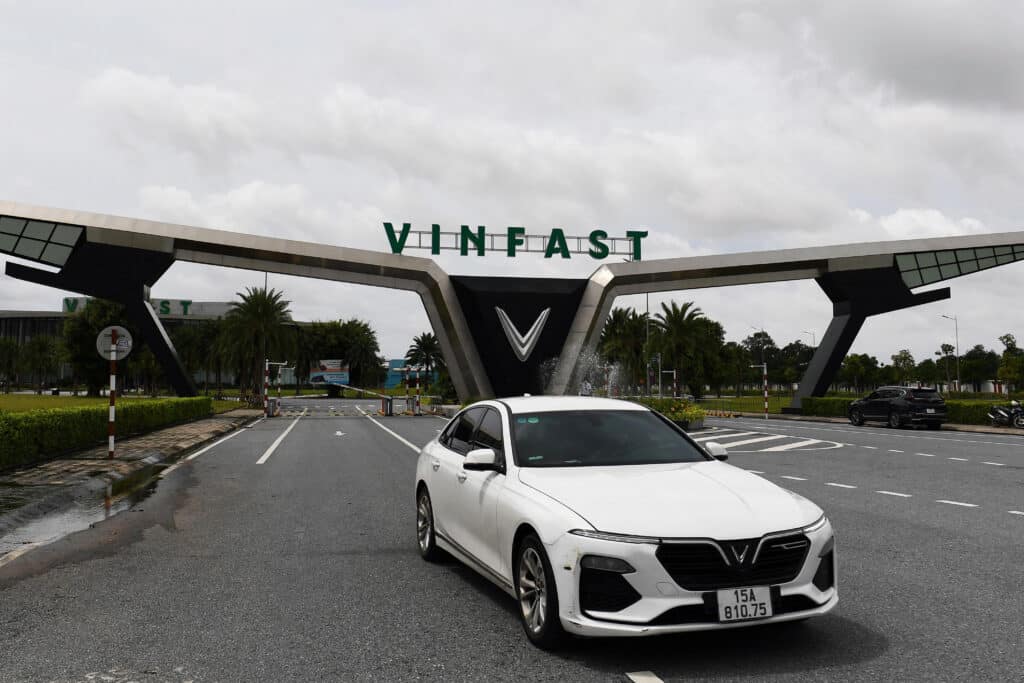The idea that a start up Vietnamese EV maker is worth more than Boeing does tell us that VinFast (NASDAQ: VFS) is over-valued. Well, either that or that Boeing is under-valued of course. But that VinFast has at times been worth more than Ford, GM, Stellantis, at times even worth more than two of the three together. Same general line of business, the three have factories, brands, workforces and customers and the fourth doesn’t. At least one of those valuations is out of line.

One hope could be said that if Tesla did it then why couldn’t another? And, well, OK, there is that. But there’s another way to look at this. Which is there are two different VinFast instruments. They should operate in line with each other. So, it’s possible to look at any differences between the two prices, of each instrument, to point out the pricing error. Or, at least, that if the two prices disagree too much then there’s an information incompatibility here.
There are two VinFast instruments
The two instruments are the VinFast stock (NASDAQ: VFS) and the VinFast warrants (NASDAQ: VFSWW). The warrants allow the purchase of a share of VFS at a predetermined price – in common with most SPAC deals this is $11.50. As with an option a warrant has an in or out of the money element to its pricing plus a time value element. One linguistic difference usually used is that warrants are long term, options short – that’s not wholly right but is good enough for us here.
OK, so if the warrants were immediately exercisable (which we think they’re not, usually a two year wait here we think) then they should be at the stock price minus the exercise price. That is, if they’re in the money then the price should be the amount by which they’re in the money. So, VFSWW should be at the VFS price minus $11.50. Which they’re clearly and obviously not. Which does need some explaining.
Different VinFast instruments should be relatively priced
VFSWW is – at my pixel time – trading at $5.57. VFS is trading at $29.50 (which is considerably down from the $80 it has reached at points). So, VFSWW should be trading at $29.50 minus $11.50, or $18. It isn’t – and that’s the pricing anomaly that needs to be explained.
As above, we’ve said before that there should be a time value to a warrant as well as the in/out of the money position. Assume that we’re right about that 2 year gap before possible exercise. That means that the time value of VFSWW is negative. The other way to put this is that those trading in the warrants believe that VFS will be lower in 2 year’s time than the current price. Which, given that it’s the same thing, means the warrants traders believe that VinFast stock is over-valued currently. QED. Further, given that everyone can trade the warrants, just as they can trade the stock, the market as a whole believes that VinFast will be worth less in two years than it is now. Again, QED.
The VinFast lessons from instrument pricing
So, this gives us our first useful answer about VinFast. The common stock is not a useful investment. Here, investment meaning buy to hold. Even if we do buy the long time story (reader – I do not) we should be in the warrants as they’re a much lower price for the same exposure. The common stock could be a lovely speculation, or even bet, in this short term but not investment.
The second lesson is that what we’d really like to be able to do is short the stock, be long the warrants and then wait two years. That the price difference exists is rather proof that we can’t do this. The reason we can’t is because there’s pretty much no stock available to borrow in order to go short. The reason for that is that only 1% of the stock made it onto the market. The chairman still owns 99%. That is, while it is a SPAC and an IPO it’s not, in any of the more usual senses either of those things. We’ve a few vouchers floating around, that’s all. It might be fun to play with the valuations of those vouchers, trade against what everyone else thinks, but it’s not actually investing in a car company that is.
Do note this is not really anything to do with the success – or not – of an EV manufacturer, or a Vietnamese company. This capital structure, only a 1% float, means that there’s near no stock available to borrow. Therefore no one can go short and so negative views of the future price can;t feed through into the stock. That’s both why there is the divergence on the stock and warrants prices and also why we can’t arbitrage that same difference. In fact, the price difference exists because we can’t arbitrage.